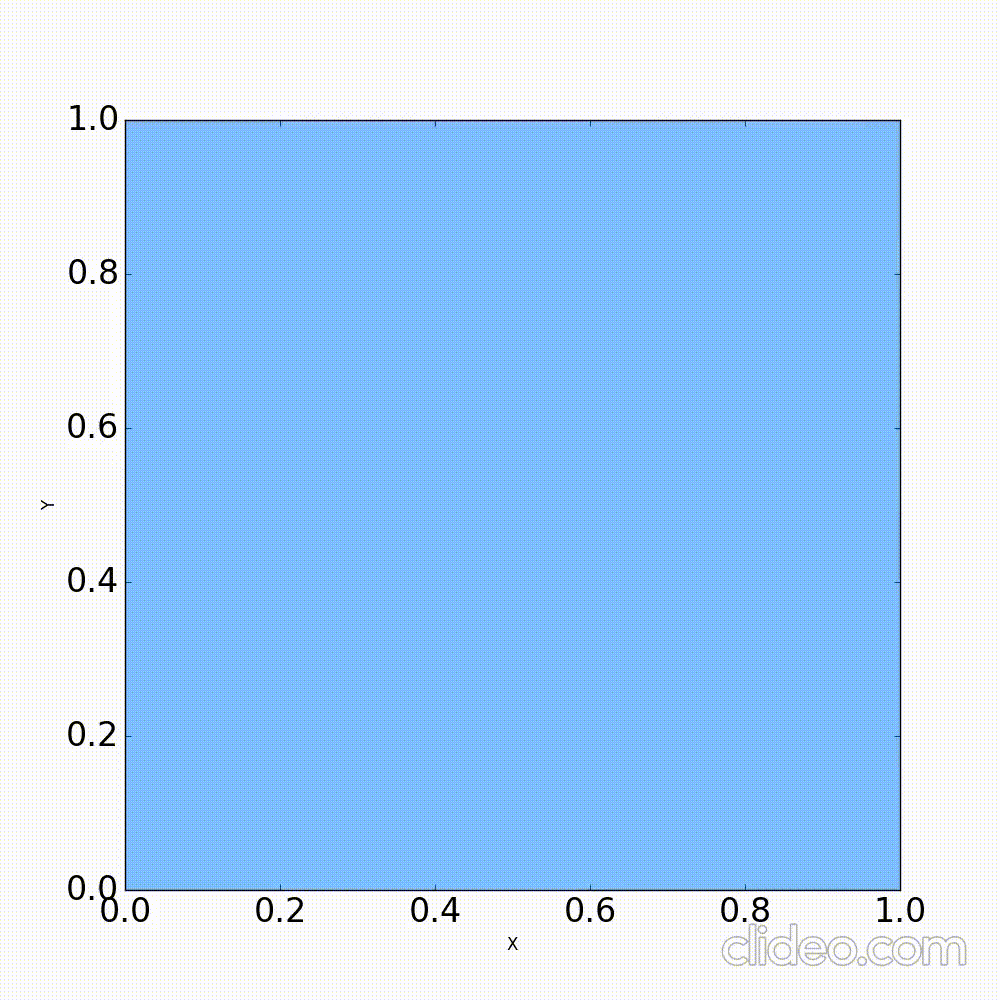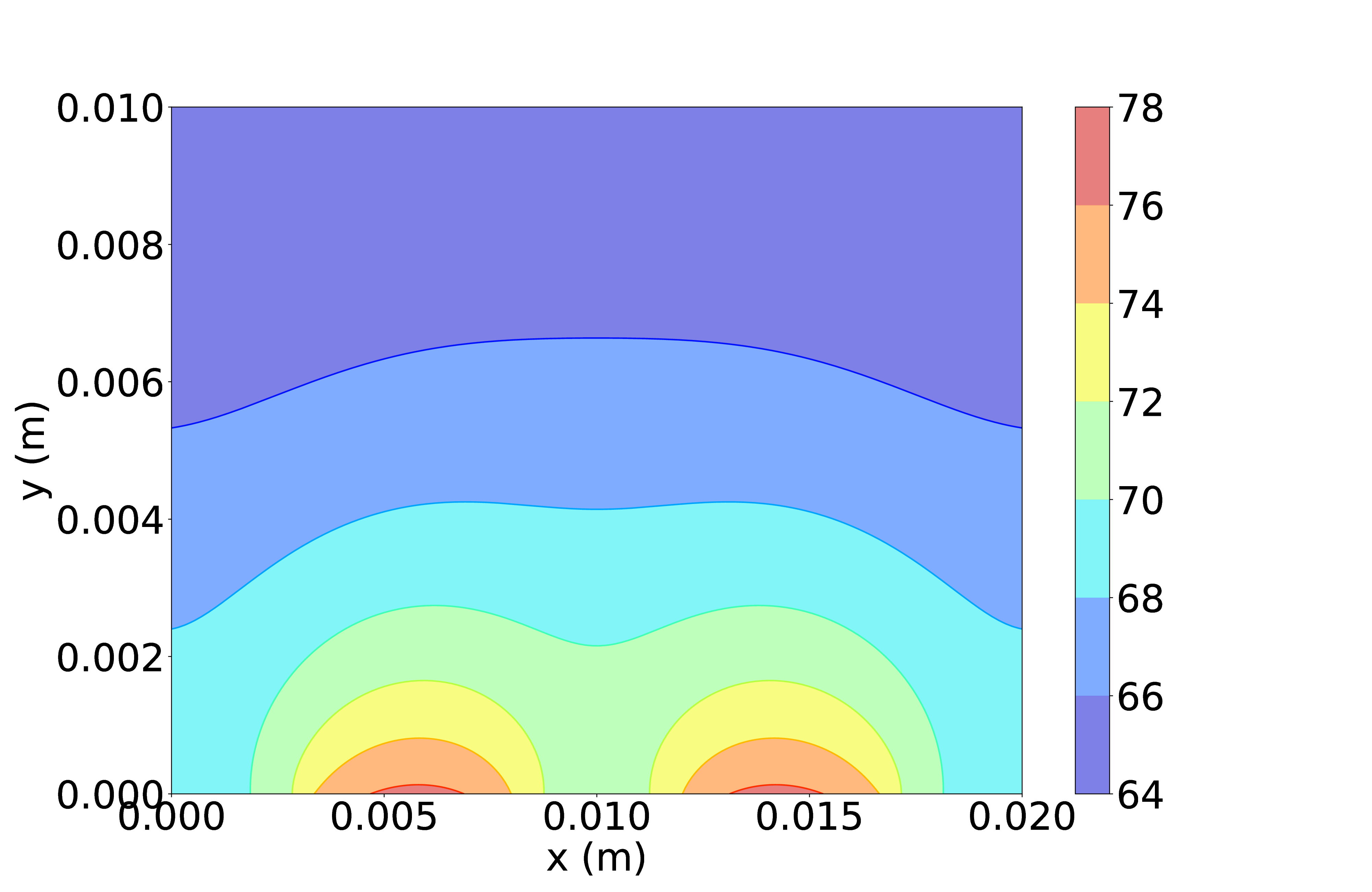That is the result of the project for the computational fluid dynamics discipline in a master's program. The project aimed to model the lid-driven cavity, and the heat conduction on plate problems, using the finite volume method. Due to the limited time, one used Python to implement the numerical solutions. However, they have a relatively good performance. Furthermore, one tried to build the codes to be comprehensible, but for any problem, feel free to contact me (almeriopamplona@gmail.com).
I did some validations that I compiled in these papers: Lid-driven Cavity and 2D Heat Transfer.
One ran simulations for six Reynolds numbers: 100, 400, 1000, 3200, 7500, and 10000. These are the same cases that Ghia (1982) investigated in his paper and were used to validate the code. Additionally, one used mainly a 128 x 128 staggered grid. For Re = 100, 400, and 1000, one used a time step equal to 1E-5 s and a final time equal to 30 s. For the other three Reynolds numbers, one used a time step equal to 2E-4 s and final time equal to 660 s. The streamlines with the velocity field as the backgroud are in the following figures:
| Re = 100 | Re = 400 | Re = 1000 |
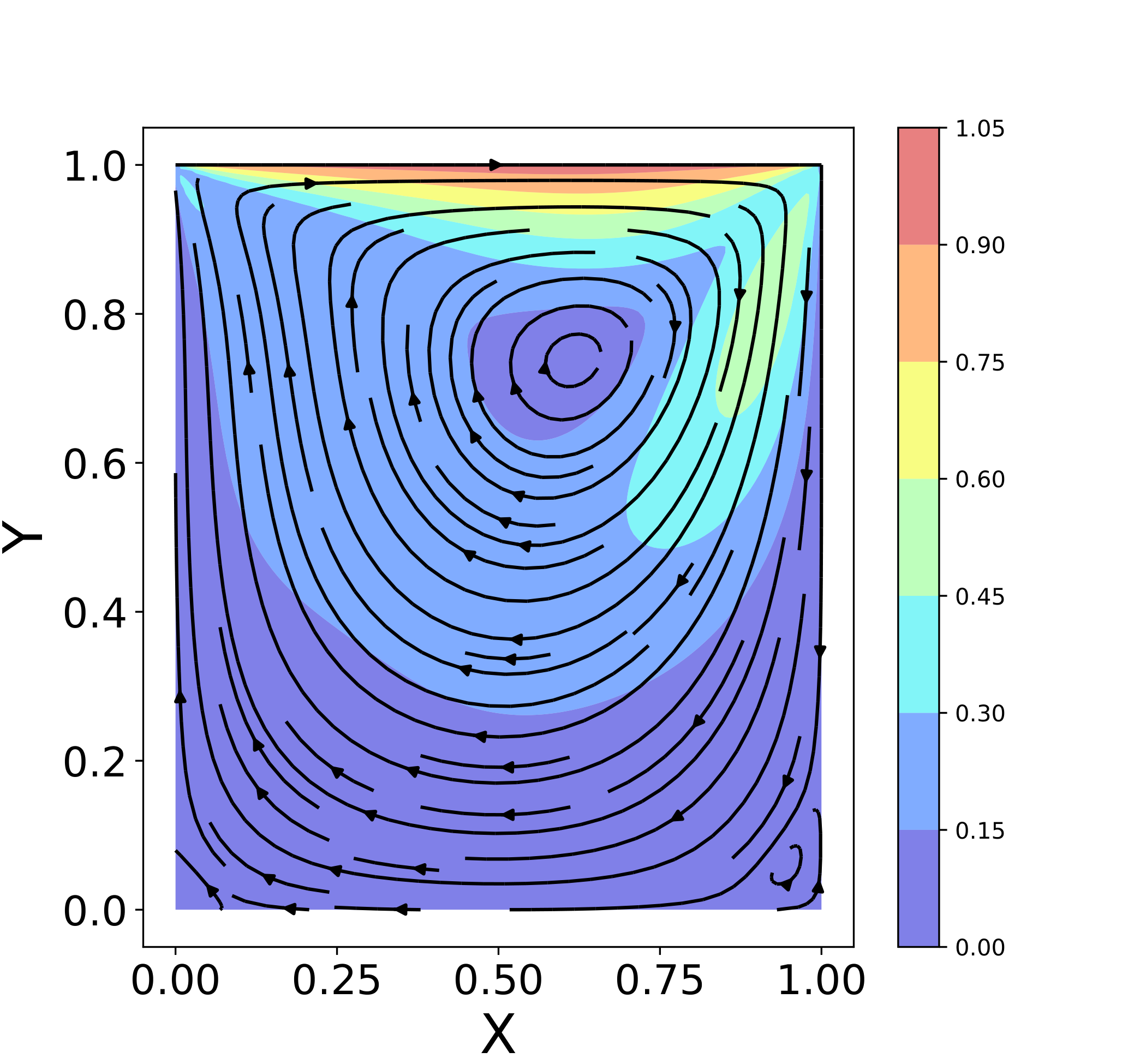 |
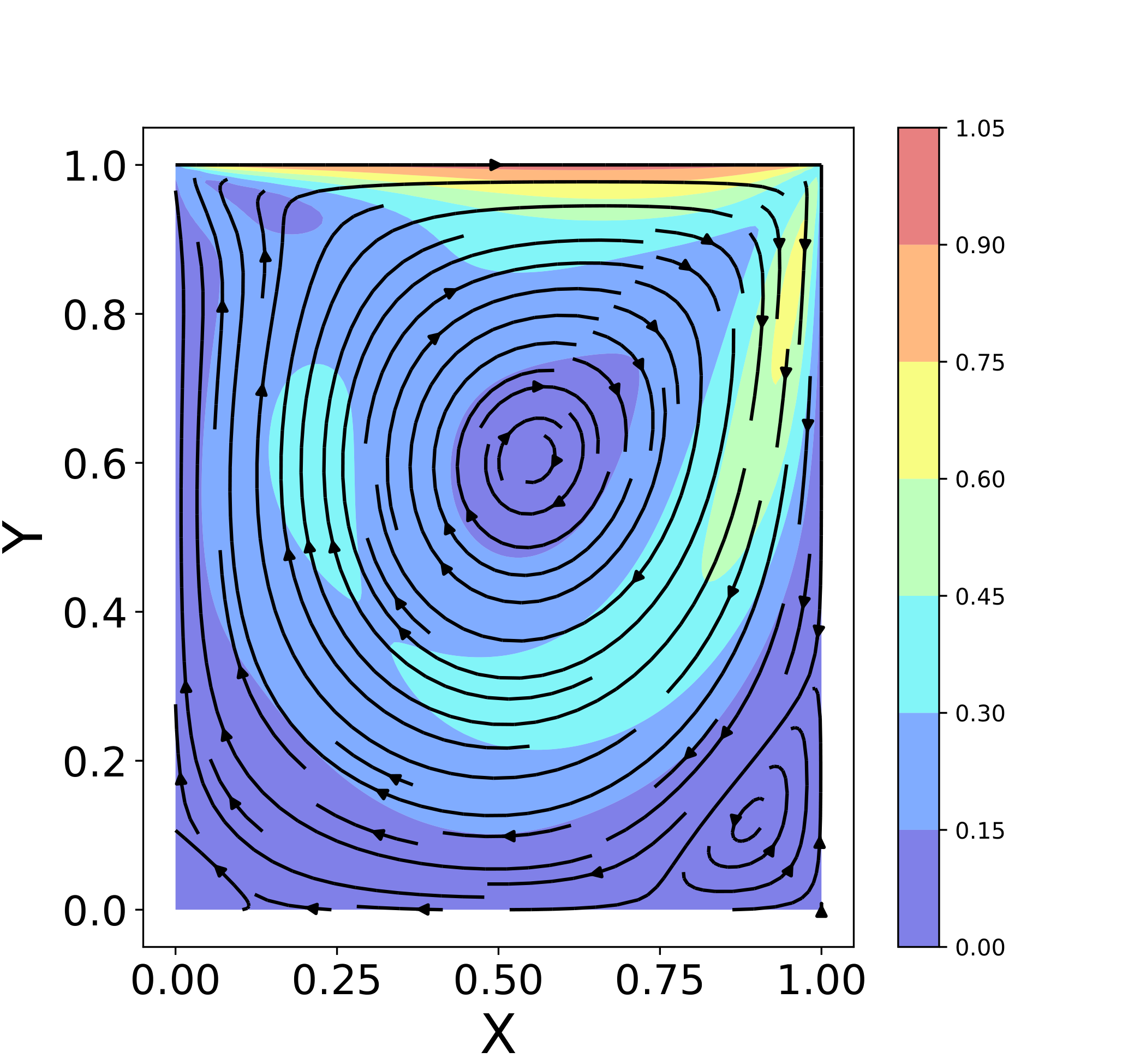 |
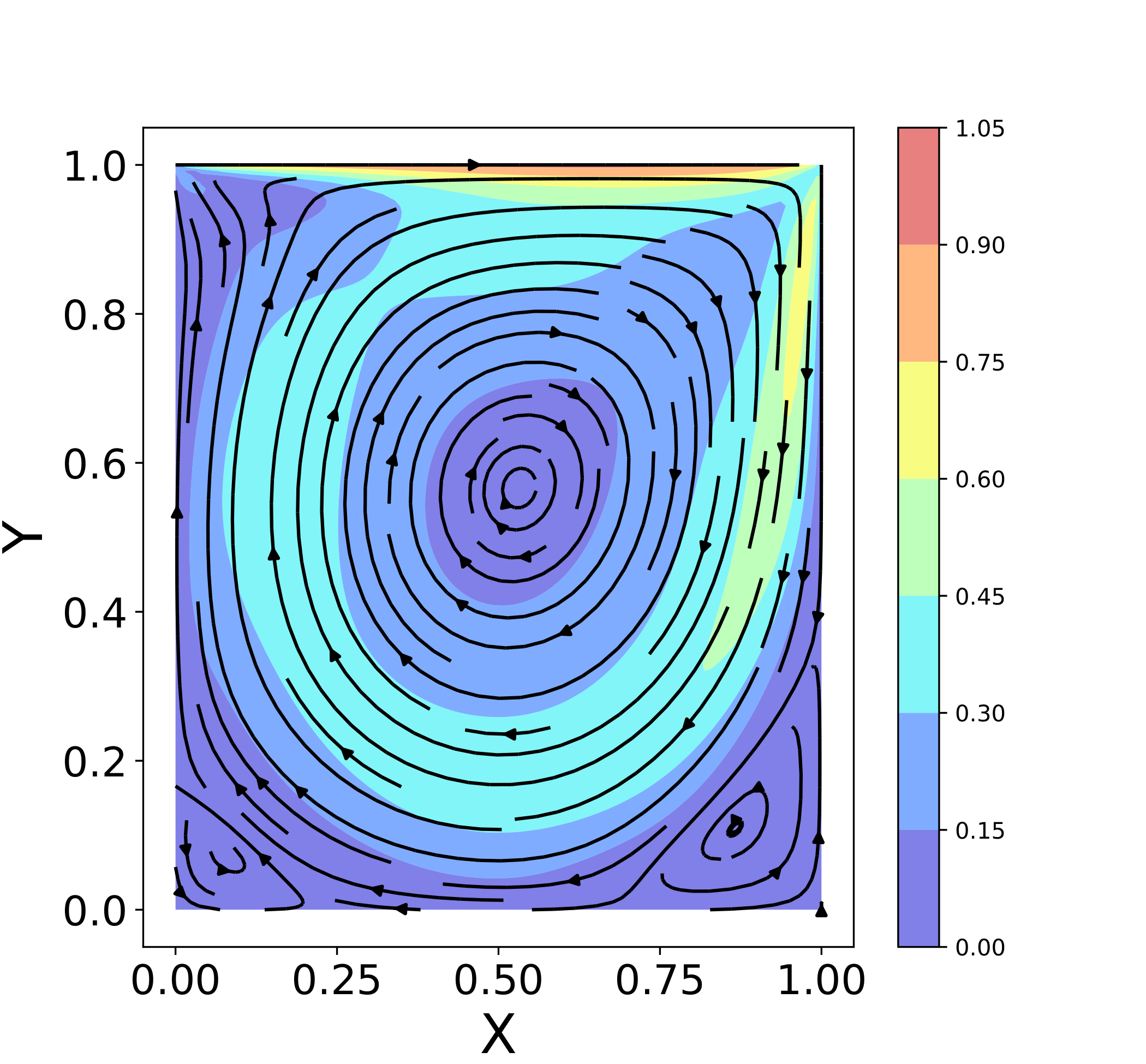 |
| Re = 3200 | Re = 7500 | Re = 10000 |
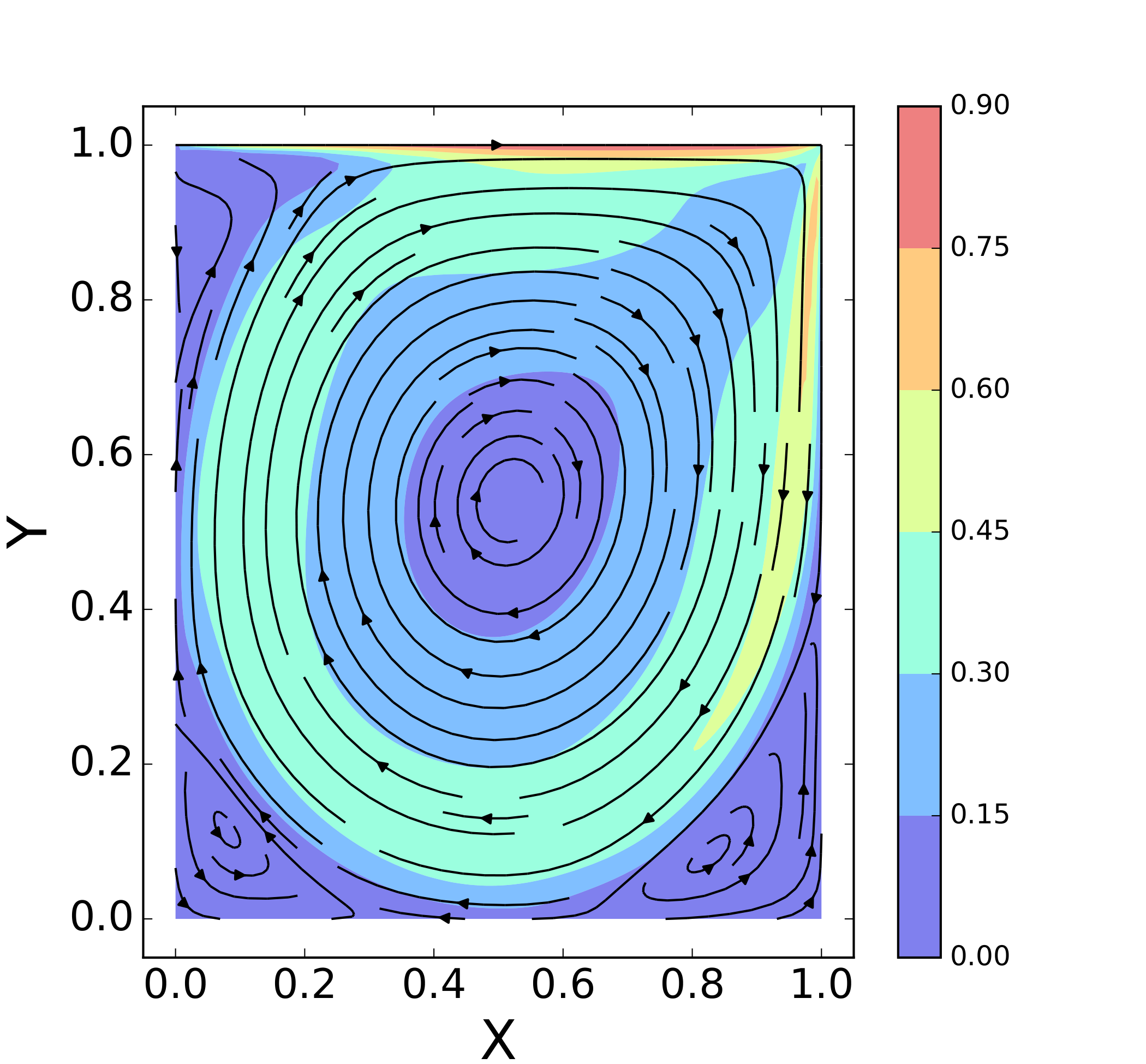 |
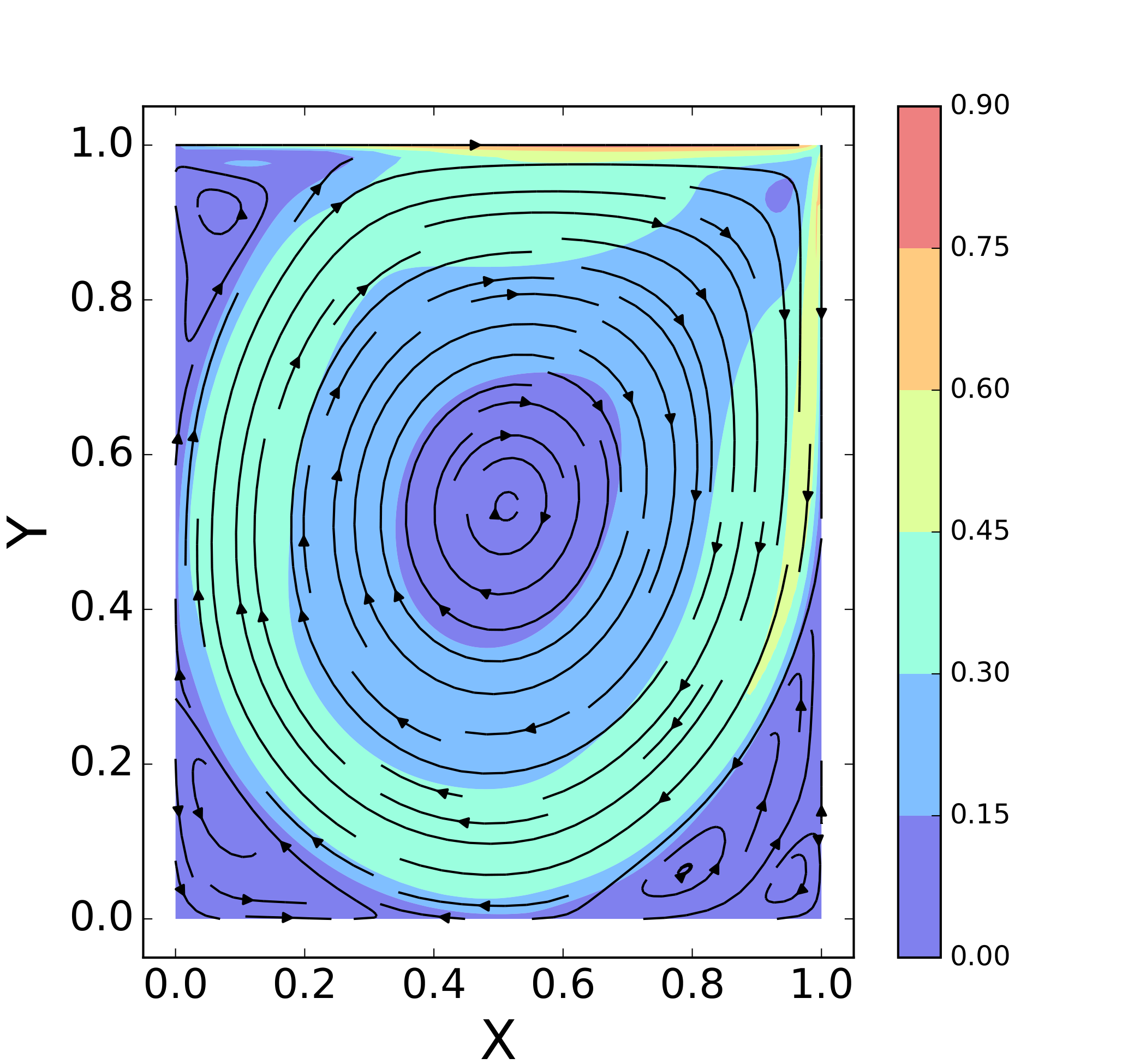 |
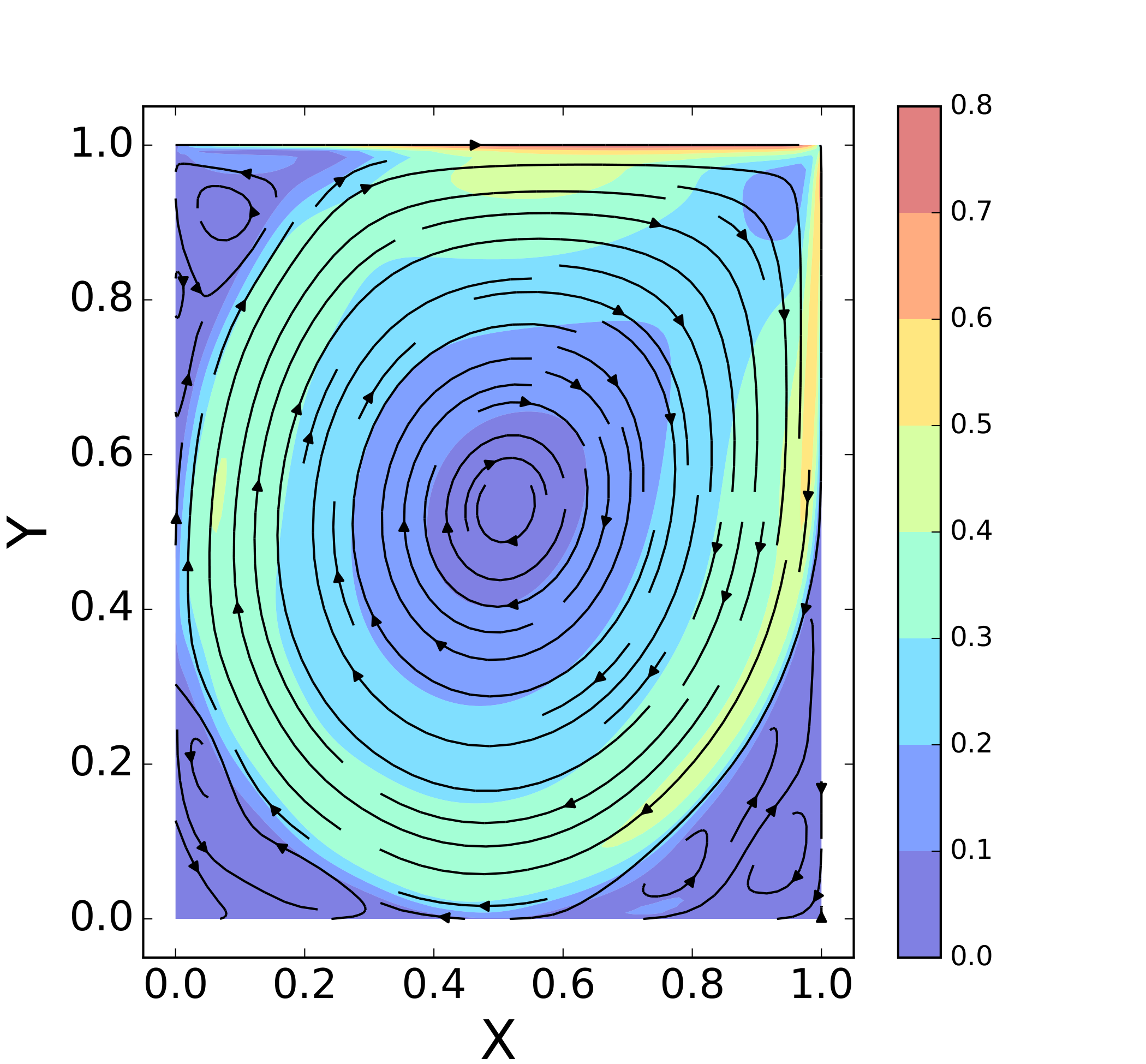 |
Time evolution is given by the following gif, which represents a 10x10 grid containing a flow with Re = 1000:
First, one ran a simple Dirichlet problem on a plate with four different temperatures on the boundaries: 25 ºC on the south, 75 ºC on the east, 100 º C on the north, and 50 º C on the west. The grid was structured and uniform and had 256 x 256 cells. The time step was 1E-4 s, the final time was 60 s, the diffusivity was 3.94E-6 m²/s, the initial temperature was 0º C, and the plate dimensions were 0.02 m in length by 0.01 m in height. The following figures show the analytical result and the numerical one:
| Analytical | Numerical - FVM |
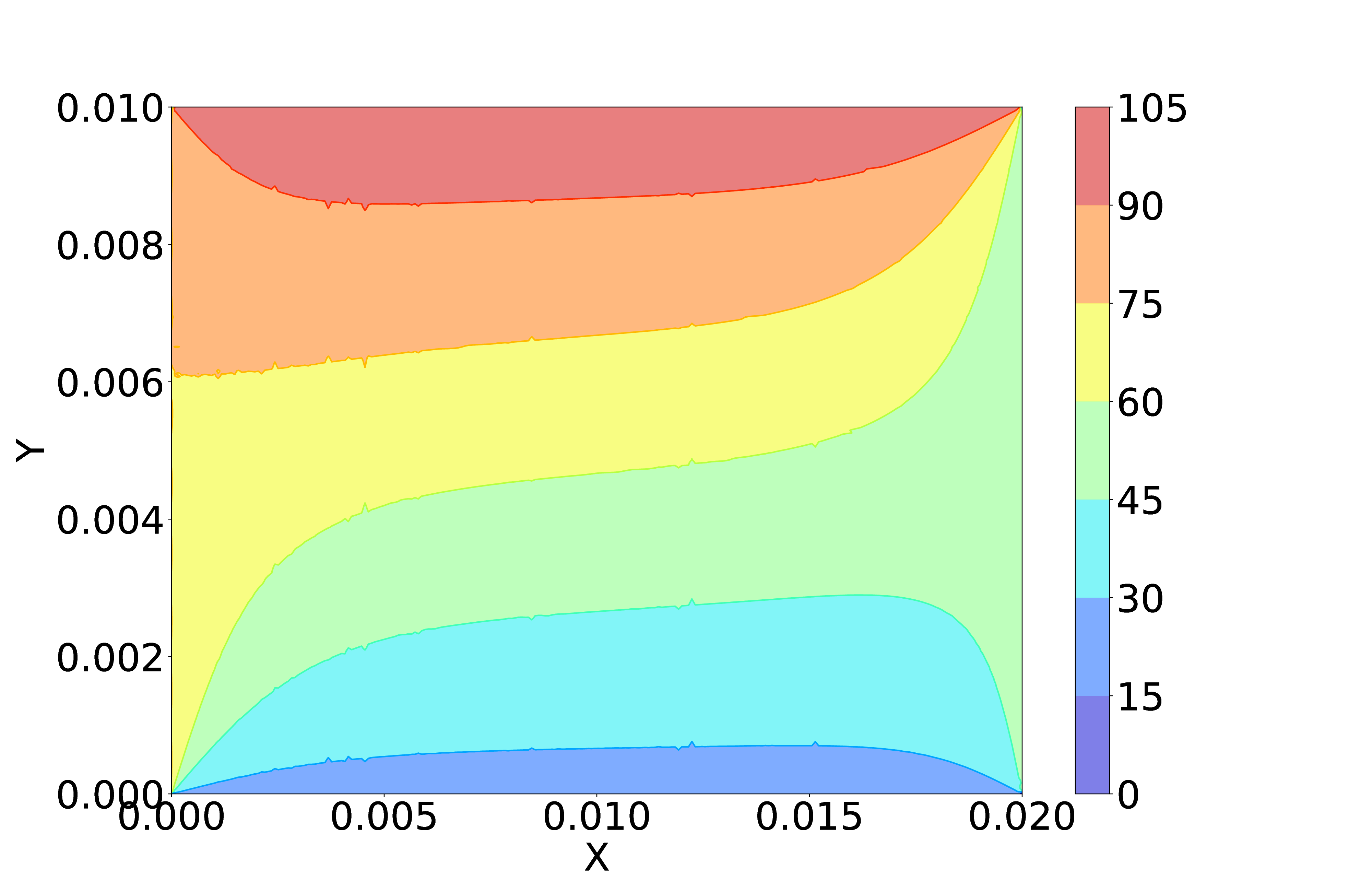 |
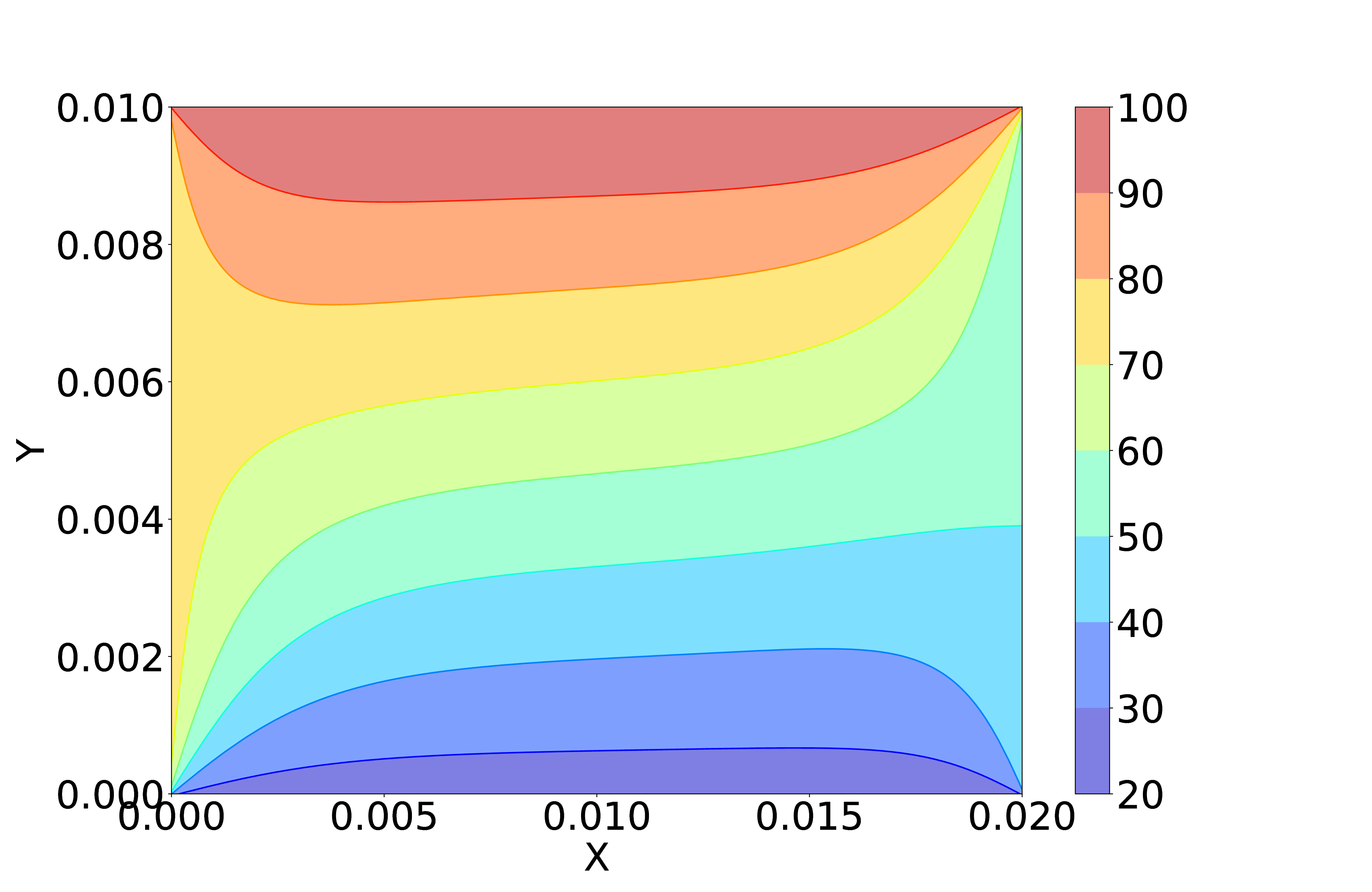 |
Then, the actual problem was a plate immersed in the environment with convection. The external temperature was 30 ºC, and the air had a convection constant of 20 W/m² K. Furthermore, the solid had dimensions and diffusivity equal to the earlier one. The conductivity was 14.9 W / m K, and there were two heat sources with 5E+4 W/m². The simulation result is presented in the figure below.
Agarwal, R.K., 1981. A third-order-accurate upwind scheme for navier-stokes solutions at high reynolds numbers. AIAA.
Ghia, U., Ghia, K.N., Shin, C.T., 1982. High-re solutions for incompressible flow using the navier-stokes equations and a multigrid method*. Journal of Computational Physics 48, 387–411.
LeVeque, R.J., 2007. Finite difference methods for ordinary and partial differential equations: Steady-state and time-dependent problems. Society for Industrial and Applied Mathematics, Philadelphia.
Morton, K.W., Mayers, D., 2005. Numerical solution of partial differential equations: An introduction. 2 ed., Cambridge University Press, Cambridge. Nallasamy, M., Prasad, K.K., 1977. On cavity flow at high reynolds numbers. J. Fluid Mech 79, 391–414.
Hirsch, C., 2007. Numerical computation of internal and external flows. 2 ed., Elservier, London.
Iserles, A., 2007. A first course in the numerical analysis of differential equations. 2009 ed., Cambridge University Press, Cambridge.
LeVeque, R.J., 2007. Finite difference methods for ordinary and partial differential equations: Steady-state and time-dependent problems. Society for Industrial and Applied Mathematics, Philadelphia.
Morton, K.W., Mayers, D., 2005. Numerical solution of partial differential equations: An introduction. 2 ed., Cambridge University Press, Cambridge.
Moukalled, F., Mangani, L., Darwish, M., 2016. The finite volume method in computational fluid dynamics: An Advanced Introduction with OpenFoam and Matlab. Springer.
Patankar, S.V., 1980. Numerical heat transfer anad fluid flow. Tatlor and Francis.
Versteeg, H.K., Malalasekera, W., 2007. An introduction to computational fluid dynamics: The finite volume method. 2 ed., Pearso Education Limited, Edinburgh.


